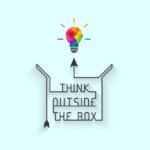Ready! Set! Goals!
Learning a language is a huge deal. It involves dedication, perseverance, the motivation to learn a specific language, and most of all – setting goals. Setting realistic and attainable goals for language learning is the only way to make language acquisition as painless as possible.
Oftentimes, people tend to shoot for the stars and end up shooting themselves in the foot. When learning a language, it is important to remember that it is a process (a freakin’ long one!). There is no magic – it’s simply time with the language, hundreds of hours of it. Setting your goals too high too fast can leave you feeling defeated. You probably have a job, kids, a spouse, other hobbies and responsibility, so you likely do not have 40 hours a week to make language learning your job. How do you make progress in regards to learning a new language, while also having a life?
Your goals for learning a new language have to be realistic.
Fluency will not be attained in 10 hours, one hundred hours or even two hundred hours. You can’t think of language learning in terms of weeks or years because someone might have conversation classes for 10 hours a week and someone else might read in the new language for 30 minutes a week. We can’t compare these two learners, so we must speak in hours.
Before setting any goals, it is important to ask yourself questions to gauge, not only what you want this experience to be, but also what your ultimate goal is.
- Why do you want to learn this language?
- What are the most relevant topics for you to focus on?
If you’re learning French to speak with your wife’s family in France, then you should at least take 2 hours a week (minimum!) of conversation lessons with a teacher that focuses on learning through comprehensible input and topics surrounding family conversations. You should realistically hope to be at a decent level by 300 hours (or, 3 years). But you’ll go through many levels between now and then which will boost your confidence.
Now, if you’re looking to take your English level from B1 (low intermediate) to C1 (low native level), then you’ll need approximately 500 hours. This type of program would include watching TV (because you already have a decent level), podcasts (listen, listen, listen for overall comprehension and new vocabulary), and speaking with a conversation teacher at least 2 hours a week.
And if you’re learning for job reasons, make sure you role play and focus on job-related topics. Since I learned Spanish with friends and coworkers outside of work, my business vocabulary for meetings in Spanish is seriously lacking. Be sure to have the conversations in class that you want to have in real life. This type of program would likely take about 3 years as well, possibly 4.
It all depends on where you are now and where you want to be.
Make your language goals specific.
It is not enough to say you’d like to learn the language. Be SMART in how you plan to do so. Whether that be through combinations of studying, watching TV shows, collecting vocabulary, or whatever way works best for you, ensure that there is no room for you to question what the short-term goal of today is and how you are to achieve it. Break these goals down into specific line-by-line steps. If by Wednesday, you want to know all the countries of the world, what should you be doing on Monday and Tuesday that will help you achieve this goal? Doing this takes the guessing game out of language acquisition. No longer does it seem like a mountain that you have to climb that is so daunting and overpowering, instead, the path to fluency – whatever that looks like – is a winding staircase, that although steep, you can take one step at a time.
We also suggest breaking it into hour packets. For example, if your goal with Japanese was to get to 100 hours taken, you might want to race there as fast as you can. After all, you want to get there quickly, because the beginning of learning a language can be so uninspiring because you can say so little! Then, after you reach 100 hours, you can give yourself a reward – a Japanese dinner, or a trip, or a book that you’ve been wanting.
Then, set a new goal, 100 more hours by X date. If you know that 300 hours is the beginner level for Japanese, your ultimate goal could be to finish these 300 hours in less than 10 months. But if you thought about 300 hours from the beginning, many would get frustrated and give up before they even started, so by breaking up the goals into 100 hours of conversation classes at a time, you can put those in your calendar and SEE the progress by each hour you scheduled. If every packet with your teacher is 10 hours, you know you have to buy and schedule 10 packets of hours to get to your goal.
Create the ultimate language goal.
Fluency looks different for every person, in that, every person has a different reason and motivation for learning a language. As a consultant, fluency could look like being able to effectively communicate with your partners and clients about their businesses and policies. Whereas a doctor needs to know the body parts much more than needing to be able to read a client docket. All your short-term goals culminate in achieving this marker of fluency – whatever that may look like.
Your ultimate language goal does not have to be the finality of your language learning. It can be the goal that propels you to continue past the minimum you need to survive. Use this tool to make it more than just acquiring a language.
In short, don’t have conversations with your teacher that you don’t think you’ll be having in real life. I see too often that people who want to get conversational (i.e., make friends and travel) are using textbooks for formal work environments. This is setting you up to fail because you’re going to your desired country and no one is going to speak the way your teacher was teaching you. Be careful of this!
Memorialize your language goals.
Write them down. Every single goal and idea you have in this effort needs to be explicitly stated with the methods, short-term and ultimate language goals you hope to achieve. Use inviting and encouraging language – make it feel tangible and achievable. By the end of the week, you WILL be able to list all of the body parts.
Memorializing goes beyond just writing these goals down. It involves reviewing and revisiting them constantly (a good tutor will do this with you). These goals have to become a part of your language learning process. It should almost be a ritual to check and update them as you become more comfortable in the language. Check on this progress and record it. These goals are not just words on a page but are stops along the way on this language learning journey. At TruFluency, we actually create 3-month goals with every client and look at them often to make sure we are still on track to reach every goal made.
Learning a new language has to be more than just a spur of the moment idea. It takes thought, planning, and goal-setting. There will be constant moments of frustration and feelings of inadequacy. It will seem like an inordinate amount of work, especially if you’ve never learnt a language before. Breathe deep and take pen to paper. Start asking your questions and writing down your language goals. You may even be ready to seek help that can motivate and guide you personally. Here at TruFluency, we provide many resources that are bound to fit your needs. Take it one day at a time, one goal at a time, one word at a time. In no time, you’ll be giving clear presentations, effortless speaking engagements, and wowing your colleagues with your control of the language.





